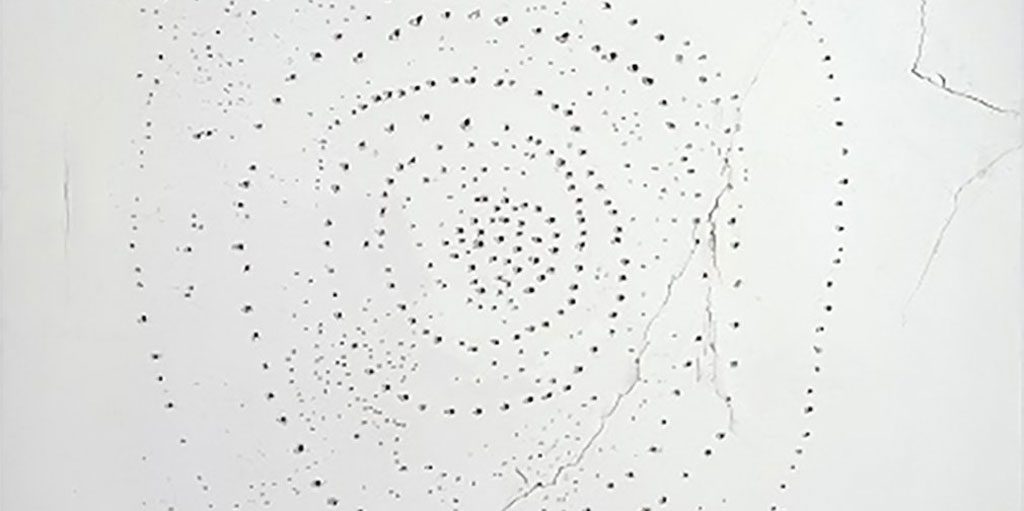ART CITIES:Moscow-Lucio Fontana
 In 1958 in his studio in Milan, Lucio Fontana performs one of the simplest and yet most radical gestures of the twentieth century. The artist cuts the canvas, establishing his famous pictorial cycle: the “Tagli”. The series was =, being intensely developed throughout the following decade and lasting until the end of the artist’s life. Fontana came to the “Tagli” at the age of 59, at height of a long and multifaceted research process which had been undertaken since the 1920s with the intention of tracing a new art that would express pure artistic freedom.
In 1958 in his studio in Milan, Lucio Fontana performs one of the simplest and yet most radical gestures of the twentieth century. The artist cuts the canvas, establishing his famous pictorial cycle: the “Tagli”. The series was =, being intensely developed throughout the following decade and lasting until the end of the artist’s life. Fontana came to the “Tagli” at the age of 59, at height of a long and multifaceted research process which had been undertaken since the 1920s with the intention of tracing a new art that would express pure artistic freedom.
By Dimitris Lempesis
Photo: Multimedia Art Museum Moscow Archive
Including 60 work a retrospective exhibition of Lucio Fontana is on presentation for the 1st time in Moscow. Lucio Fontana was born in Argentina in 1899, to a family of immigrants from Italy. His first artistic experience was as a child, when at the age of 10 he began work as an apprentice in the studio of his father, the sculptor Luigi Fontana. In 1929 he graduated from the Brera Academy in Milan. During the First World War he lived and worked in Argentina, before returning to Italy in 1947 and publishing the “Primo Manifesto dello Spazialismo”, written jointly with the critic Giorgio Kaisserlian, philosopher Beniamino Joppolo and writer Milena Milani. That moment heralded an entirely new chapter in the artist’s work. Lucio Fontana raises the global question of the interaction between art and science, scientific and technological progress and the new plastic methods and forms of expression. Thanks to the work of Lucio Fontana tectonic changes have occurred in postwar Italian and world art. In any discussion of this artist’s oeuvre, it is the famous “Buchi” and “Tagli” that first spring to mind. Yet Fontana’s work is not merely a vast assembly of innovative techniques in the use of infinitely diverse plastic materials. This is a deep philosophical reflection on the boundless universe around us and the place occupied by human civilisation as it rapidly changes under the pressure of scientific and technological progress, as well as a meditation on the in-depth meaning the concept of ‘freedom’ entails. These signature holes in the works of Lucio Fontana meant access to a new infinite dimension for the artist. Light discovered beyond the canvas space held sacred by the art world became an exit into the cosmos. And here Fontana’s ideas show their visionary power, articulated in his signed manifestos as art’s capacity to anticipate scientific discoveries in the same way that scientific and technological progress necessarily affects artistic creativity. In parallel with searches for new freedom outside the canvas, in the 1940s Fontana continued to work as a sculptor, building a dialogue with the history of world art, with the major styles and above all, the ‘baroque’ style, which proved the most relevant to the artist’s own passionate and emotional nature. The exhibition presents four sculptures from this period, as well as twelve ceramic “Crucifixions”. Fontana’s ceramic crucifixes with colored glaze, created from the 1940s to 60s, reveal the deep interconnection of the artist’s spiritual and artistic quests. In 1958 Fontana began his most famous “Tagli” which continued to occupy him for the rest of his life. Already in 1949, at the Galleria del Naviglio in Milan, Lucio Fontana presented his first work from the series” Ambienti spaziali” the “Ambiente spaziale a luce near”. In contempraty terms this exhibition can be seen as one of the first total installations. The strategy of presenting art objects to the viewer is fundamentally replaced by the concept of immersing viewers in a totally transformed environment revealed to them by active and interactive. This search for light led Fontana to work with neon, which he used to create “Ambienti spaziali”. From the 1960s onwards neon makes a constant appearance in art practice, and it still features in the work of many artists. In the last and perhaps most productive period of his work Lucio Fontana devised two new cycles, examples of which are presented in the exhibition. These are ”Quanta” (1959-60), polygonal fragments of canvas that can be arranged in space in arbitrary combinations, and also the cycle “Teatrini”, a series he produced from 1964 to 1966. In this cycle he combined pictorial and sculptural elements, creating a new multi-layered space. “Teatrini”, makes a connection with his previous sculptural series “Nature”, some of which will also be displayed at the exhibition.
Info: Curators: Olga Sviblova, Elena Geuna in collaboration with Lucio Fontana Foundation, Multimedia Art Museum Moscow, ul. Ostozhenka, 16, Moscow, Duration: 27/11/19-23/2/20, Days & Hours: Tue-Sun 12:00-21:00, http://mamm-mdf.ru



